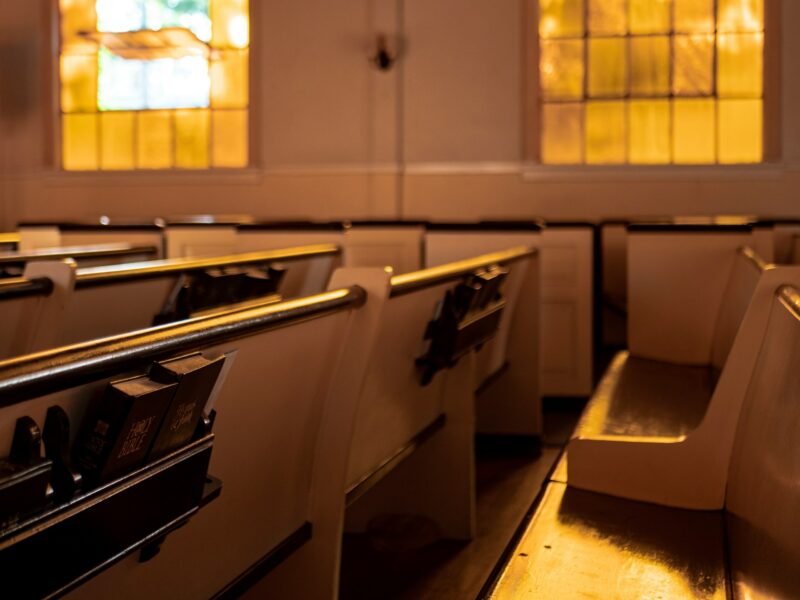Images of Pilgrimage: Paradise and Wilderness in Christian Spirituality. By R. D. Crouse. London, UK: Darton, Longman, and Todd Ltd. 96 pp. $24.99 CAD (paper).
Christian thinkers past and present have often considered our relationship with place—the lands and cities that we dwell or sojourn in. Often, these considerations reflect larger theological questions: Are our homes parts of the world which we are “just passin’ through” on our way to the Kingdom or foretastes of the New Creation? At other times, our reflections on place emerge from current events and politics—responses to climate change or disputes concerning the Christian’s proper relationship with the state in which she dwells.
Robert Crouse’s Images of Pilgrimage is a beautiful and enriching reflection that speaks into this conversation with the ever-ancient, ever-new wisdom of Scripture and tradition. Born out of a series of addresses given at a clergy retreat in Fr. Crouse’s native Nova Scotia in 1986, Fr. Crouse’s work takes as its starting point the images of pilgrimage, paradise, and wilderness as they have been developed within the Christian tradition and beyond. His consideration of how these conceptions of place constitute “the fundamental and all-encompassing theme of spiritual life” leads him to explore how they are developed within Scripture, pagan literature (chiefly Homer and Virgil), Augustine, and Dante (11).
Fr. Crouse’s work holds appeal for both an academic audience seeking to deeply understand these works and a lay audience seeking spiritual nourishment. He weaves together insightful commentary with profound spiritual reflection on our longing for a homeland and the sense of exile we experience in the world.
Especially considering the brevity of the work, it is remarkable how Fr. Crouse can take such significant works of literature and explain their inner workings and relationships to one another in such a clear and authoritative manner. For example, in a few sentences he articulates the essential similarity and difference between the pagan and Christian pursuits of paradise (23–24):
From a pagan standpoint, the pure and perfect good, the divine life, is the deepest longing, the highest aspiration of the human spirit; but alas its conclusion is impossible…. The distance is too great, there can be no mediation.
Such a statement bears fruit when applied to complex pieces of text, such as Augustine’s description of his relationship with Platonic philosophy or Dante’s treatment of Ulysses in Inferno 26, as Fr. Crouse goes on to show. His mastery of these texts allows for commentary that is both accessible for the novice and insightful for those who are already familiar.
Even as he explicates ancient thinkers, Fr. Crouse never loses sight of the practical spiritual implications of the ideas that he is discussing: his goal is always spiritual nourishment for the present church. His reflections contain insight that is worth dwelling on, from his observation that the great difficulty of the Christian life is “when we forget our pilgrimage and fall into a mindless conformity with the spirit of the age” (83) to his claim that “maturity in Christ is something more than the innocence of Adam” (53). Such statements regularly emerge within the course of his discussions of scripture or literature. Fr. Crouse’s explorations of these images of place are clearly meant to help the individual Christian and the Church dwell more faithfully within our own places in this present age.
Those seeking a clear thesis about the natures of pilgrimage, paradise, and wilderness may not be entirely satisfied: while he certainly makes distinct claims about these images, Fr. Crouse’s reflections do not seem intended to advance a particular argument or interpret the meanings of these concepts precisely. The work is more reflective than argumentative. This manner of writing is clearly purposeful, given Fr. Crouse’s claim that “the images have a depth and richness and wholeness, which the exactness and explicitness of scientific language can never quite exhaust” (13). For this reason, the work demands slow and careful attention to Fr. Crouse’s exploration of these images.
Stephen Blackwood, Neil Robertson, and Gary Thorne, the editors of the larger project of which Images of Pilgrimage is a part (The Works of Robert Fr. Crouse), state that their purpose is to make Fr. Crouse’s writings and teaching “available to a contemporary readership seeking guidance and access to the full and abiding tradition of Christian spirituality” (7). Images of Pilgrimage provides indeed a wealth of wisdom from Fr. Crouse, and the Christian tradition more broadly, for those who are seeking to dwell faithfully in the time and place in which God has set them.







'Book Review: “Images of Pilgrimage”' has no comments
Be the first to comment this post!